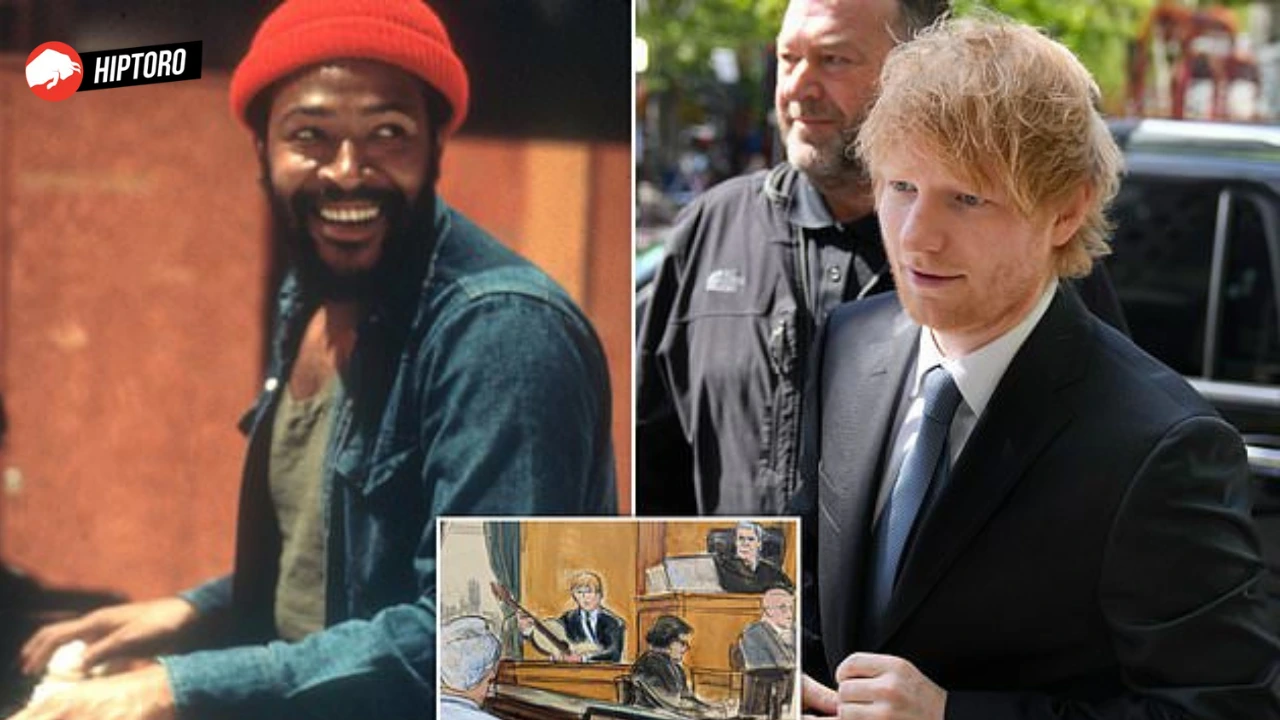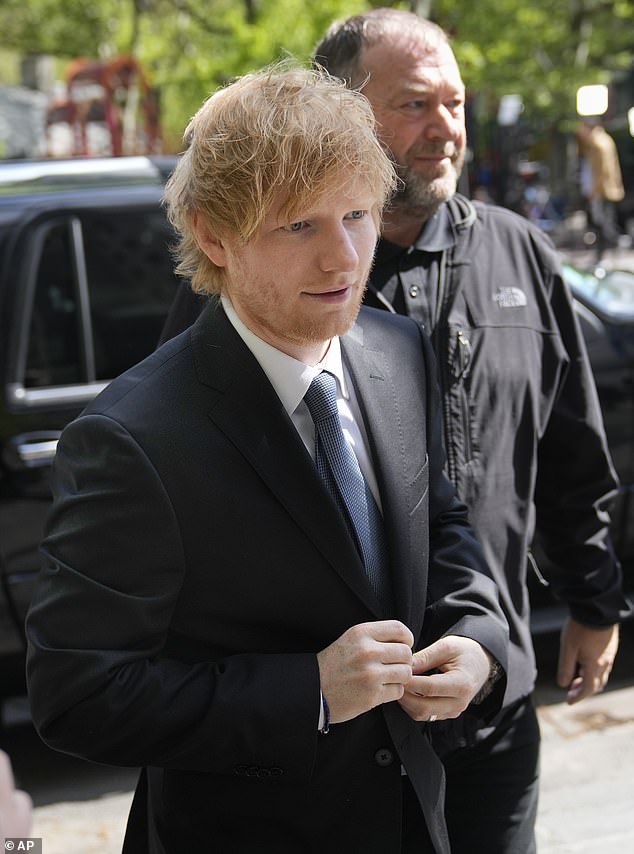Ed Sheeran stated on Monday that if he is proven guilty of ripping off Marvin Gaye’s soul hit ‘Let’s Get It On,’ he will quit music, calling the accusations ‘insulting.’
As he took the stand in Manhattan federal court, the 32-year-old British singer-songwriter vehemently denied claims that he infringed on Gaye and his co-writer Ed Townsend’s 1973 hit when he wrote and composed “Thinking Out Loud.”
He reportedly declared that if the jury found him guilty, he would be ‘done’ with music.
‘If that happens, I’m done, I’m stopping,’ Sheeran said when asked by his attorney Ilene Farkas about the toll the trial is taking on him.
‘I find it really insulting to devote my whole life to being a performer and a songwriter and have someone diminish it,’ the ‘Shape of You’ singer added.
Townsend’s heirs are suing Sheeran, claiming ‘striking similarities’ between the songs. They are suing for $100 million in restitution.
Ed Sheeran
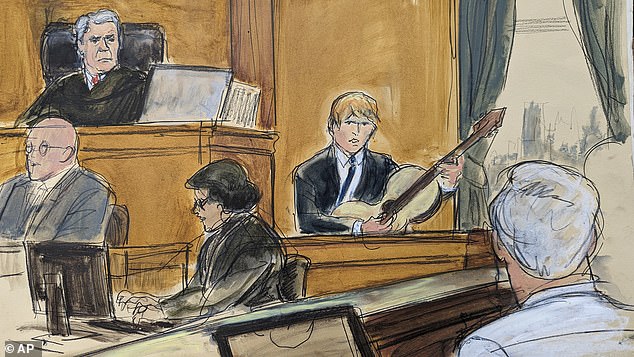
Last week, lawyers for Townsend’s heirs presented a video of Sheeran seamlessly transitioning between ‘Thinking Out Loud’ and ‘Let’s Get it On’ during a live performance in Manhattan federal court.
They claimed that doing so amounted to a confession that he had stolen the tune.
However, On Monday, Sheeran testified in court that he and other performers frequently perform ‘mash ups’ and that he had previously combined ‘Thinking Out Loud’ with Van Morrison’s ‘Crazy in Love’ and Dolly Parton’s ‘I Will Always Love You.’
‘I mash up songs at lots of gigs. Many songs have similar chords. You can go from “Let It Be” to “No Woman No Cry” and switch back,’ he said.
‘And quite frankly, if I’d done what you’re accusing me of doing, I’d be quite an idiot to stand on a stage in front of 20,000 people and do that,’ he added.
He also stated that Irish musician Van Morrison was the inspiration for his famous song.
To support his argument, the singer strummed the four-chord sequence from ‘Let’s Get It On’ as part of his delivery of Morrison songs such as ‘Tupelo Honey’ and ‘Crazy Love.’
The artist also slammed the plaintiff’s expert witness, musicologist Alexander Stewart, who stated last week that the first 24 seconds of ‘Thinking Out Loud’ were comparable to the start of ‘Let’s Get It On.’
Stewart testified in court that they share the same harmonic rhythm,’ pointing out melodic similarities in the verse, chorus, and interlude.
During Stewart’s testimony, which took up the entire day on Wednesday, a computer-generated version of Let’s Get It On was played in court.
According to an insider, hilarity erupted in the courtroom as the computer-generated version of Let’s Get It On was played to show the similarities between the songs.
However, Ed Sheeran claimed that Stewart changed the song’s chords and melody to sound more like Gaye’s.
‘If I’m being honest, what he’s doing here is criminal,’ remarked Ed Sheeran. ‘I’m not sure why he’s considered an expert.’
Later, during cross-examination by Patrick Frank, a lawyer for the heirs, Ed Sheeran became combative, brushing aside discrepancies between his and co-writer Amy Wadge’s accounts of exactly when and how ‘Thinking Out Loud’ was written in February 2014.
He mocked Frank’s questioning about how often Ed Sheeran writes songs with others, which he claimed was usual practice.
‘You’re not breaking any new ground here,’ he remarked.
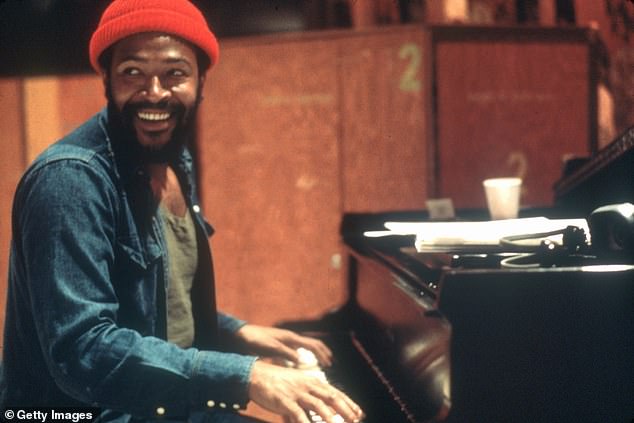
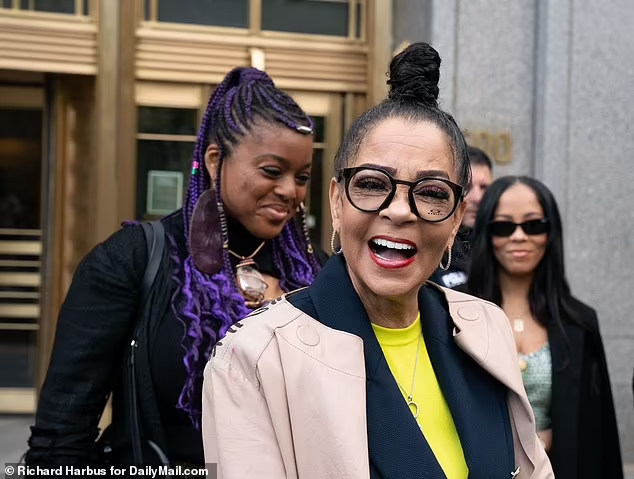
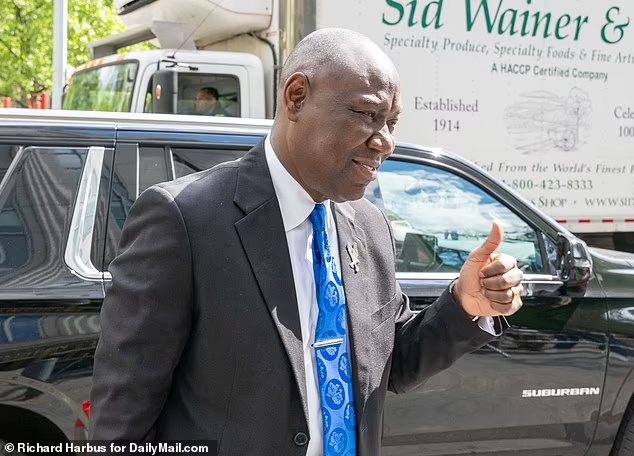
The musician previously revealed his method for writing the song about eternal love shortly after starting a new romantic relationship and after his grandfather died.
‘I get a lot of inspiration from my life and family,’ Ed Sheeran added.
Wadge began strumming the chords for the song on a visit to Ed Sheeran’s home in England, and they collaborated on the lyrics, according to Ed Sheeran.
He sang the words ‘I’m singing out now’ on the stand, which he stated he sang during his composing session with Wadge.
His song topped the charts in both the United Kingdom and the United States. It won a Grammy Award for Song of the Year in 2016, but Townsend’s family sued for copyright infringement in 2017.
If Ed Sheeran is found to be responsible, a second trial will be held to decide the amount of damages.


